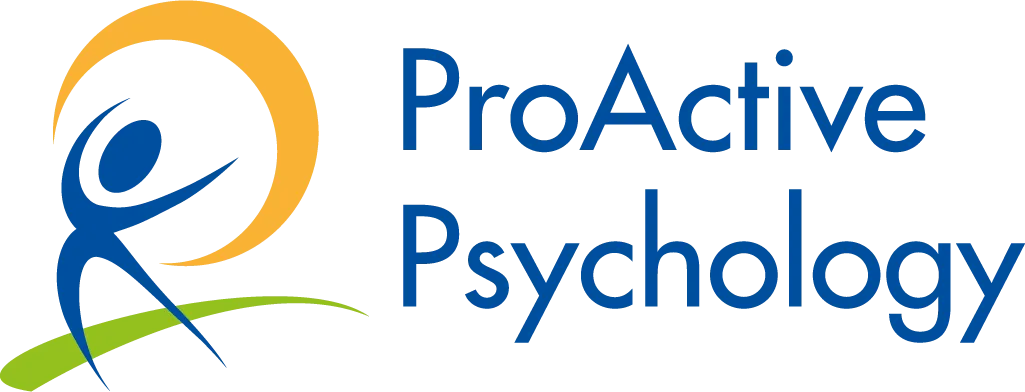
You walk past your teen’s room and see the familiar glow of a phone screen. They’re laughing at short clips, swiping quickly, one after another. Then, at dinner, they say the words you didn’t expect: “I think I have ADHD.”
In that moment, your mind races. Is this serious? Just a phase? A trend they’ve picked up from online social media? For many parents, this scenario feels unsettling. ADHD has become one of the most common topics on social media, especially ADHD on TikTok, where the hashtag #ADHD has gathered tens of billions of views. Short videos describe everything from losing your keys to procrastinating on homework as signs of the disorder.
ADHD is a real neurodevelopmental condition – not every teen who forgets their homework or daydreams in class has it. Understanding this phenomenon means separating fact from fiction. TikTok and other platforms have fuelled a surge in ADHD self-diagnosis, leaving parents unsure whether their child is facing a genuine challenge or simply echoing what they’ve seen online.
Below, we’ll explore why teens are drawn to these labels, what true ADHD looks like, and how parents can respond with empathy and clarity. The goal is to help busy parents make sense of the hype – to recognise when a child might need professional help versus when they may simply be experiencing everyday teenage struggles. Armed with knowledge, you can support your teen through this trend without either dismissing their concerns or jumping to unwarranted conclusions.
The Rise of ADHD Self-Diagnosis on TikTok
TikTok has become a modern mirror where teens search for answers about themselves. One viral clip lists “losing focus mid-sentence” as a sign of ADHD. Another shows someone stacking coffee cups, joking, “This is my ADHD brain at work.” For a teenager scrolling late at night, these examples can feel like puzzle pieces falling into place.
The problem is that not every piece belongs in the ADHD puzzle.
Research has found that more than half of TikTok’s most popular videos about ADHD contain misleading or inaccurate information. It’s like following a recipe where half the ingredients are wrong. You might end up with something that looks familiar, but it isn’t the real thing.
TikTok’s algorithm adds to the effect. Watch two or three ADHD clips, and soon your feed is filled with them. It’s like standing in a hall of mirrors, each reflection repeating the same message: “This could be you.” For teens already questioning their identity, this constant reinforcement can quickly shift from curiosity to conviction.
At the same time, there are positives. Social media has reduced stigma, turning ADHD from a label kids once feared into something teens talk about openly. Many feel relief at finding others who describe the same struggles. Yet when everyday quirks like fidgeting or forgetting homework are painted as definitive signs of ADHD, the line between awareness and misinformation blurs.
Recognising this mix is essential. As a parent, your teen isn’t trying to be dramatic. They’re trying to make sense of their world with the tools they have, and right now, TikTok is one of the loudest tools in the box.
Why Teens Are Drawn to These Labels
Adolescence has always been a time of exploration and discovery. Teens seek explanations, comparisons, and a sense of belonging. TikTok offers all three in thirty-second bursts.
The platform’s algorithm works like a magnet. Watch a couple of ADHD clips and suddenly your whole feed fills with them. It’s as if your teen walks into a room where every wall has the exact reflection. The more they see, the more convinced they become: “This is me.”
There’s also comfort in having a label.
For a teen who feels different, ADHD can seem like a neat answer to the chaos they live with. Celebrities and influencers talk openly about their diagnoses, making ADHD seem not only normal but sometimes even desirable. Instead of being a mark of shame, it’s reframed as creativity, energy, or a “superpower.”
Add to this the power of community. Teens scroll through comments filled with “same!” and “this explains my life.” Suddenly, they don’t feel alone. For some, this is the first time they’ve heard others describe what they experience. That sense of being understood is magnetic — even if the content is oversimplified or inaccurate.
For parents, this explains why your child might latch onto ADHD so quickly. It isn’t just about symptoms. It’s about identity, belonging, and finding language for feelings they can’t yet fully explain.
Separating Fact from Fiction: What ADHD Really Is
ADHD is more than a handful of quirks shown in a video.
Clinicians define it as a neurodevelopmental condition marked by patterns of inattention, hyperactivity, and impulsivity that consistently disrupt daily life. It isn’t occasional forgetfulness or the odd restless evening; it’s persistent and affects school, friendships, and family life.
Think of it like the difference between catching a cold and living with asthma. Everyone gets a blocked nose now and then, but asthma is an ongoing condition that shows up in different settings and changes how you function day to day. ADHD works the same way. It isn’t about having a few scattered symptoms; it’s about a pattern that causes real and repeated difficulties.
Typical signs include (and are not restricted to):
- trouble staying focused on tasks,
- losing things often,
- fidgeting when stillness is expected,
- interrupting others,
- or struggling to finish assignments even when the work is understood.
Importantly, these behaviours appear across different areas of life, not just on homework or chores, but at school, in sports, and with friends.
This is where TikTok can be misleading.
Many videos highlight relatable moments, such as forgetting keys, zoning out, or procrastinating. Still, these on their own aren’t enough for a diagnosis. As child psychologists explain, ADHD symptoms must be significant, consistent, and evident in more than one environment. Without that bigger picture, everyday challenges can be mistaken for a disorder.
The key is remembering that ADHD is a real and serious condition, but it isn’t as simple as a trending checklist. Recognising that distinction is the first step in parenting and helping your teen get clarity, rather than confusion.
The Dangers of Self-Diagnosis on Social Media
When teens diagnose themselves from TikTok, it can feel empowering in the moment. But without context, it’s like trying to repair a car by listening to the noises it makes in the driveway; you might guess the problem, but you won’t know for sure. Still, you could just as easily miss something important or make it worse.
One risk is mistaking regular ups and downs for a disorder. Everyone procrastinates, loses focus, or forgets things at some point. On TikTok, those moments are often presented as proof of ADHD. For a teenager, this can turn ordinary struggles into something alarming. They may begin to believe, “I can’t help it, I have ADHD,” and stop trying strategies that could actually help.
Another danger is delayed support for real issues. Trouble concentrating might stem from anxiety, depression, poor sleep, or even stress at school. If your teen decides it’s “definitely ADHD” based on a few videos, they may ignore the actual cause of their distress and miss the chance to get the right help.
Self-diagnosis can also strain family relationships. Imagine your child is convinced TikTok has “told them the truth,” but a professional says otherwise. That gap can leave teens feeling unheard or dismissed, even when the professional assessment is accurate.
Finally, there’s the temptation of quick fixes. Teens may request medication or special accommodations at school before a comprehensive assessment is conducted. Taken out of context, treatments could be unnecessary or even harmful.
As a parent, this doesn’t mean shutting down the conversation; it means being mindful of the child’s perspective. It means staying aware of the risks, so you can guide your teen toward careful, informed steps rather than quick answers from a feed.
A Clear Plan for Parents
So what should you do if your teen comes to you convinced they have ADHD? The answer isn’t to dismiss them, nor is it to panic. The path forward sits in between: listen, explore, and, if needed, seek professional help.
1. Listen first.
When your child says, “I think I have ADHD,” it’s an invitation to talk. Stop and listen without judgment. Thank them for opening up. Even if TikTok planted the idea, their struggles feel real to them.
2. Ask gentle questions.
You might say, “What made you think that?” or “How does this affect you at school or at home?” These questions show you care while also helping your teen reflect on whether their difficulties are occasional or ongoing.
3. Provide balance.
Acknowledge that ADHD is real, but not every distraction or restless moment means a diagnosis. Many people find TikTok relatable, yet real ADHD is characterised by consistent patterns across various areas of life.
4. Focus on strategies.
Regardless of whether ADHD is present, you can support your teen with small steps: a clear study routine, regular breaks, healthier sleep habits, or even a simple planner. These tools help determine whether or not a diagnosis is made.
5. Seek a professional opinion if needed.
If your teen’s struggles are persistent and affecting schoolwork, friendships, or family life, consider a formal ADHD assessment. In Australia, this usually involves questionnaires, interviews, and reports from both parents and teachers. Psychologists look for patterns across settings, not just one-off behaviours. The process takes time, but it provides clarity and direction.
Following these steps shows your teen that you’re on their side. You’re not brushing off their concerns, and you’re not handing over the steering wheel to TikTok either. Instead, you’re guiding them toward clarity and real support.
What Happens if You Ignore vs. Take Action
When your teen says, “I think I have ADHD,” how you respond can shape more than the following conversation. It can influence their confidence, their willingness to open up, and even their long-term well-being.
If ignored:
- Your teen may feel dismissed or misunderstood.
- Their struggles — whether ADHD, anxiety, or something else — could worsen without support.
- They may turn further to social media for answers, trusting influencers over you or professionals.
- In some cases, untreated ADHD or another condition can lead to academic setbacks, strained friendships, and ongoing frustration at home.
If supported:
- Your teen feels heard and respected.
- They learn that their concerns deserve thoughtful attention, not quick dismissal.
- If ADHD or another condition is present, professional assessment and support provide tools to manage it effectively.
- Even if no diagnosis is made, your teen gains coping strategies and feels reassured that they’re not alone.
The difference is clear. Ignoring the signs leaves a cloud of confusion. Taking action — listening, exploring, and seeking guidance — clears the path. It gives your teen a chance to grow with confidence, knowing they have you by their side.
Moving Forward with Clarity
TikTok has opened the door for teens to talk about ADHD in ways that were rare just a few years ago. That openness is valuable, but social media doesn’t replace careful assessment. For parents, the task is to keep the door open while guiding your child toward the right kind of help.
If your teen is showing ongoing struggles with focus, restlessness, or organisation, the next step isn’t another video; it’s a conversation with a professional who understands the whole picture.
At ProActive Psychology, our clinicians provide thorough ADHD assessments and practical strategies to support families. Whether your child meets the criteria for ADHD or is navigating other challenges, you’ll walk away with clear guidance and a personalised plan that fits your family’s needs.
Book a consult today and give your teen the clarity they deserve, giving yourself the peace of mind that comes with knowing you’ve taken the right step.
References
- Australian Psychological Society (2024) Why has everyone suddenly got ADHD? Available at: https://psychology.org.au/about-us/news-and-media/aps-in-the-media/2024/why-has-everyone-suddenly-got-adhd (Accessed: 24 September 2025).
- News-Medical (2025) TikTok fuels ADHD self-diagnosis with misleading content, study shows. Available at: https://www.news-medical.net/news/20250325/TikTok-fuels-ADHD-self-diagnosis-with-misleading-content-study-shows.aspx (Accessed: 24 September 2025).
- Psychology Today (2025) Is Your Child Being Diagnosed on TikTok? Available at: https://www.psychologytoday.com/us/blog/screen-play/202504/is-your-child-being-diagnosed-on-tiktok (Accessed: 24 September 2025).
- Parents (2025) New Analysis Shows TikTok’s ADHD Misinformation Problem. Available at: https://www.parents.com/new-analysis-shows-tiktok-adhd-misinformation-problem-11704397 (Accessed: 24 September 2025).


